Discover 15 hidden attractions, cool sights, and unusual things to do in Guwahati (India). Don't miss out on these must-see attractions: Kamakhya Temple, Srimanta Sankardev Kalakshetra, and Saraighat Bridge. Also, be sure to include Umananda Temple in your itinerary.
Below, you can find the list of the most amazing places you should visit in Guwahati (Assam).
Table of Contents
Kamakhya Temple
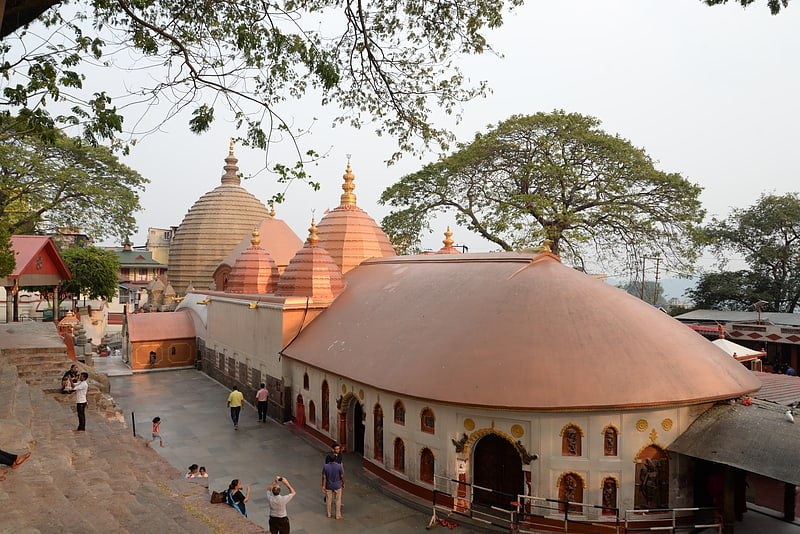
Also known as: कामाख्या मन्दिर
Hindu temple in Guwahati, India. The Kamakhya Temple is a Hindu temple at Nilachal hills in Guwahati, Assam. Dedicated to the mother goddess Kamakhya, it is one of the oldest and most revered centres of Tantric practices. The temple is the center of the Kulachara Tantra Marga and the site of the Ambubachi Mela, an annual festival that celebrates the menstruation of the goddess. Structurally, the temple is dated to the 8th-9th century with many subsequent rebuildings—and the final hybrid architecture defines a local style called Nilachal. It is also one of the oldest of the 51 pithas in the Shakta tradition. An obscure place of worship for much of history it became an important pilgrimage destination, especially for those from Bengal, in the 19th century during colonial rule.
Originally an autochthonous place of worship of a local goddess where the primary worship of the aniconic yoni set in natural stone continues till today, the Kamakya Temple became identified with the state power when the Mleccha dynasty of Kamarupa patronised it first, followed by the Palas, the Koch, and the Ahoms. The Kalika Purana, written during the Pala rule, connected Naraka, the legitimizing progenitor of the Kamarupa kings, with the goddess Kamakhya representing the region and the Kamarupa kingdom.
It has been suggested that historically the worship progressed in three phases—yoni under the Mlechhas, yogini under the Palas and the Mahavidyas under the Kochs. The main temple is surrounded in a complex of individual temples dedicated to the ten Mahavidyas of Saktism, namely, Kali, Tara, Tripura Sundari, Bhuvaneshwari, Bhairavi, Chhinnamasta, Dhumavati, Bagalamukhi, Matangi and Kamalatmika. Among these, Tripurasundari, Matangi and Kamala reside inside the main temple whereas the other seven reside in individual temples. Temples for individual Mahavidyas together as a group, as found in the complex, is rare and uncommon.
In July 2015, the Supreme Court of India transferred the administration of the Temple from the Kamakhya Debutter Board to the Bordeuri Samaj.[1]
Srimanta Sankardev Kalakshetra
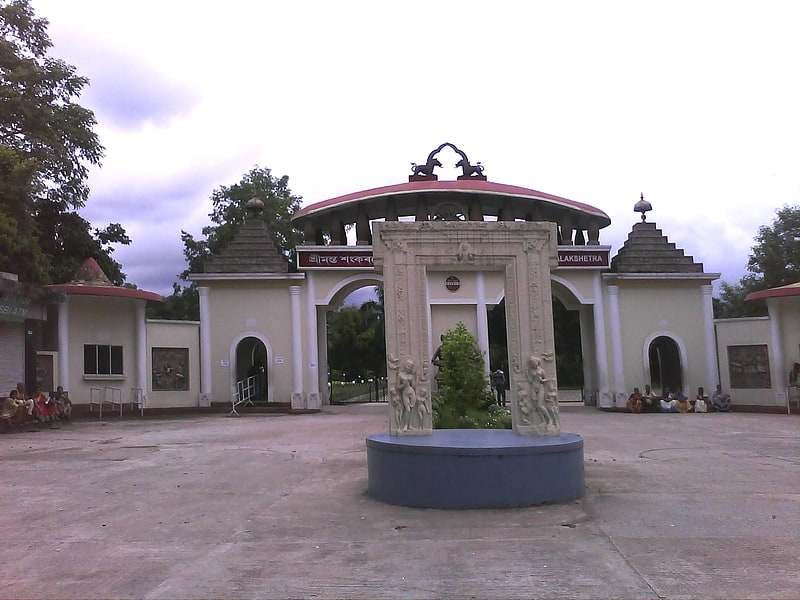
Also known as: शंकरदेव कलाक्षेत्र
Cultural institute in Guwahati, India. Srimanta Sankaradev Kalakshetra, commonly known as Kalakshetra, is a cultural institution in the Panjabari area of Guwahati, Assam, India, named after the medieval poet-playwright and reformer Srimanta Sankardev. It includes a cultural museum, library and various facilities for preserving, demonstrating and performing cultural items, besides a children's park. In addition to being Northeast India's largest cultural congregation, the Kalakshetra is also a major tourist spot in Guwahati. Built in the 1990s, the artistic excellence of Assam and rest of the north-eastern region is displayed here. There are eateries, places of worship, emporiums and open-air theatres within the sprawling Kalakshetra premises.
It is governed by a body of executives, selected by the Assam Government's Cultural Department and is headed by a Director of the Assam Civil Service or Indian Administrative Service cadre. The Kalakshetra is divided into several complexes. The Central Museum exhibits the articles used by different ethnic groups of Assam. The museum also houses several cultural objects of the state within it. The open-air theater can accommodate 2000 people and hosts cultural programs in its premises. Traditional dance and drama performances are conducted in this theater. The Kalakshetra also has the Artists' Village, which replicates the village society of Assam. The Sahitya Bhavan is the library in the Kalakshetra, which has a huge collection of rare books and manuscripts. It is a repository of the literature of the region. Another section of the art complex is the Lalit-Kala Bhavan. It is the center used for exhibitions and workshops on art and culture. A heritage park is also a part of the huge complex of the Shankardev Kalakshetra. Now a cable car facility is also available inside the park to commute the tourists. Nice view of the hills of Shillong plateau can be seen from the fields of Kalakshetra. The museum provides you a summary of Assamese Culture. The Bhupen Hazarika museum is another attraction of Kalakshetra.
The Kalakshetra houses number of structures and buildings abiding with the ethnic Assamese designs. A replica of the Rang Ghar, is positioned in the entrance corridor to the main Central Museum. The Central Museum preserves some of the traditional articles, or artifacts of Assamese culture. The open-air theatre, with a view of the mountainous range of the Khasi Hills, is a venue for a variety of cultural events and an audience of 2000 can see the shows from the gallery seats. What can be termed as the major attraction in the Kalakshetra is an Artistic Village. This village portrays the village life of Assam in the most liveliest of form through life like statues and model thatched huts. The majority of urban children, who are now deprived of experiencing a village life due to massive urbanization, can increase their knowledge of their roots through a virtual tour of the village. The Sahitya Bhawan is an archive of Assamese texts and literatures and provides a good reference for any scholar gathering information on Assam or the related North Eastern states. The Lalit Kala Bhawan offers a world class exhibition space for arts and sculptures.A walk through the Heritage Park gives a feeling of contentment and satisfaction to any nature's child. The Kalakshetra quite often holds various workshops of dramaturgy, cinema and other performing as well as visual arts.There are murals on the center's surrounding walls. These murals depict various war moments, Bihu dances and other Assamese representations.[2]
Address: Panjabari Rd, Guwahati
Saraighat Bridge
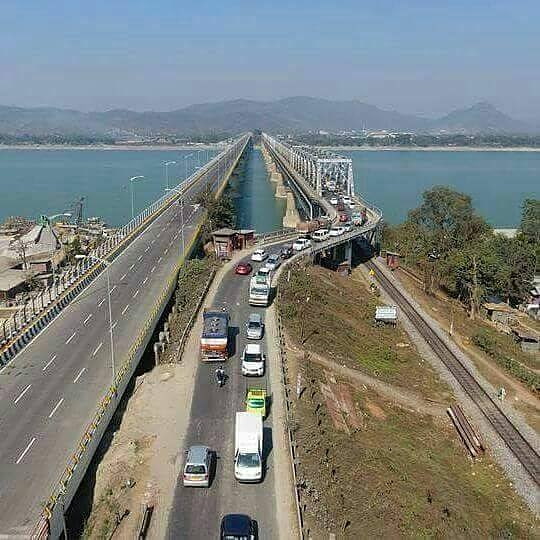
The Saraighat Bridge is a rail-cum-road bridge over Brahmaputra River in Assam, India and is the first of its kind bridge over the river in the state. The length of the bridge is 1492 meters and the road on the bridge is 7.3 meters wide.[3]
Address: Over the Brahmaputra River, Guwahati
Umananda Temple

Hindu temple in Guwahati, India. Umananda Devaloi is a Shiva temple located at the Umananda Island in the middle of river Brahmaputra just opposite the office of the Deputy Commissioner of Kamrup or the Kachari Ghat in Guwahati.
It is known as smallest inhabited riverine island in the world. Country boats that are available on the bank of Brahmaputra take the visitors to the island. The mountain on which the temple has been built is known as Bhasmacala.It was built in 1694CE in the order of King Gadadhar Singha but was broken down by an earthquake in 1867.[4]
Address: Peacock Island, Guwahati
Indira Gandhi Athletic Stadium

Stadium in Guwahati, India. Indira Gandhi Athletic Stadium, also known as Sarusajai Stadium, is a football stadium in Guwahati, Assam, India. It is the current home ground of NorthEast United FC. Besides hosting football matches, the stadium is also used for athletics. It had a total capacity of 35,000 which was later reduced to 25,000 due to installation of bucket seats for 2017 FIFA U-17 World Cup, which was hosted in India. In 2007, it hosted the 33rd National Games of India and in 2016, hosted the 12th South Asian Games. The stadium hosted the Assam Global Investors' Summit on 3 and 4 February 2018 and the 65th Filmfare Awards on 15 February 2020.
The stadium recorded the highest attendance for a football game in Assam when 32,844 spectators came to see the ISL match between local club NorthEast United and visitors Chennaiyin on 20 October 2016.[5]
Guwahati Planetarium
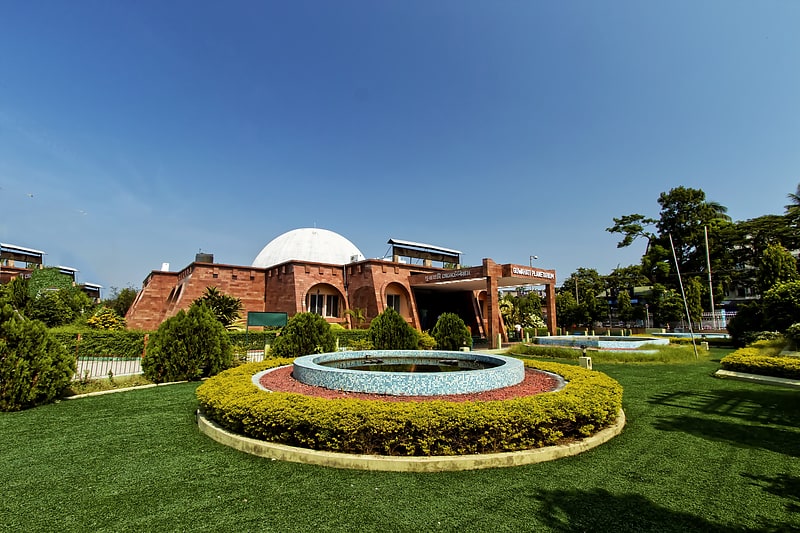
Planetarium in Guwahati, India. Guwahati Planetarium is a center for astronomical education and research. Built in 1994, it is the only planetarium in Assam and the North-Eastern region of India. Its distinctive dome and sloping walls set it apart from the skyline of the area.
The planetarium uses the Chronos star field projector, digital HD video projectors, and the Dolby sky theater's sound system to put on shows of the night sky in the theater. These shows are projected onto the interior of the dome, and are available in both Assamese and English. The shows are one of the main attractions of the planetarium. Night sky watching sessions are also popular among visitors.
The Guwahati Planetarium is an attempt to reach the young and scientifically inclined minds and provide them a glimpse of the wonders of the night sky and solar system.
Besides daily shows, the Planetarium also regularly organizes seminars, workshops and conferences for scientists and researchers. It also offers exhibitions, quizzes, and outdoor viewing facilities during eclipses for students and the local community.
The Planetarium has a unique hybrid planetarium projection system, the first one of its kind in the entire northeast region. It is the second planetarium in India to get such a system, the first one being New Delhi Planetarium.
Apart from the projection system, an astronomical gallery is soon going to be launched by the Creative Museum Designers (CMD) at the planetarium. The state science and technology department has already released funds for the upcoming project. A library is also a part of the facilities.[6]
Address: Near Gauhati High Court, 781001 Guwahati
New Saraighat Bridge

The New Saraighat Bridge, also referred to as the 2nd Saraighat Bridge is a beam bridge in India, connecting the North bank of Assam to South bank of Assam. The bridge spans the Brahmaputra River besides Old Saraighat Bridge, from Pandu, Guwahati in the south to Amingaon to the north. The construction of the bridge started in 2007. The total length of the bridge is 1,493.58 metres and it has cost an amount of Rs 475 crore to complete the bridge. It is constructed by India's largest civil engineering company, Gammon India Limited.
The three lane road bridge was inaugurated by Union minister Nitin Gadkari in the presence of Union Minister of State for Railways Rajen Gohain, Minister of Commerce and Industry, Transport and Parliamentary Affairs Chandra Mohan Patowary, Minister of PWD, Fisheries and Excise Parimal Suklabaidya, Minister Keshab Mahanta and many other ministers on 28 January 2017.[7]
Dighalipukhuri
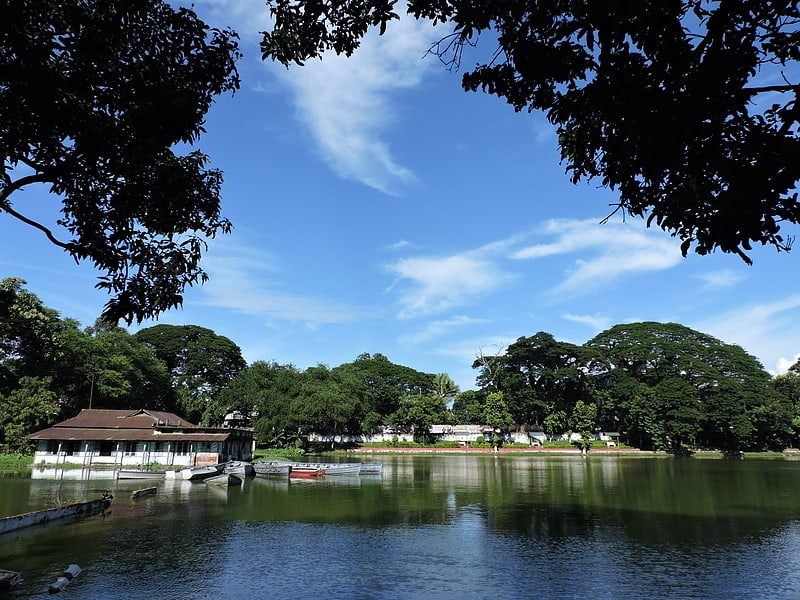
Pond. Dighalipukhuri; also Dighalipukhri is a rectangular man-made pond in Guwahati, about half a mile long. Dighalipukhuri is occupied altogether area of garden and pond between 17-18 bigha lands.[8]
Dipor Bil
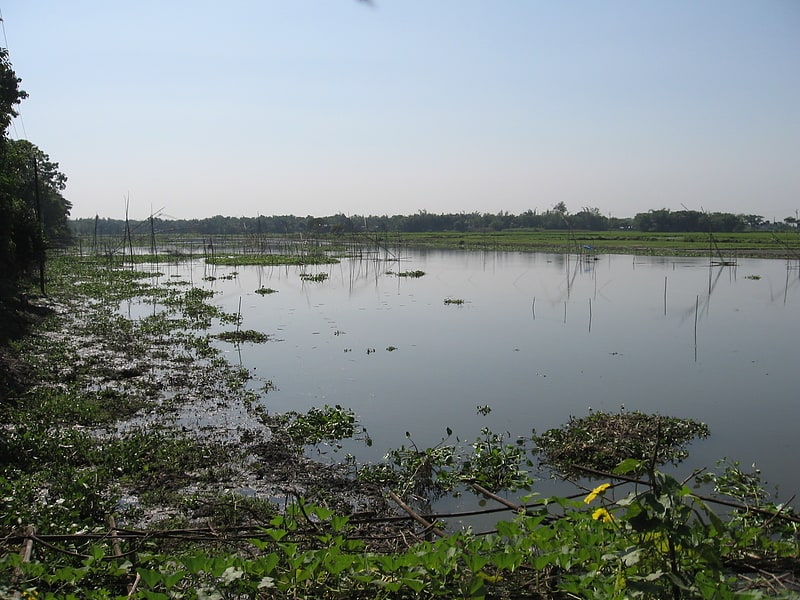
Lake in India. Dipor Bil, also spelt Deepor Beel, is located to the south-west of Guwahati city, in Kamrup Metropolitan district of Assam, India It is a permanent freshwater lake, in a former channel of the Brahmaputra River, to the south of the main river. It is also called a wetland under the Ramsar Convention which has listed the lake in November 2002, as a Ramsar Site for undertaking conservation measures on the basis of its biological and environmental importance.
Considered one of the largest beels in the Brahmaputra valley of Lower Assam, it is categorised as representative of the wetland type under the Burma monsoon forest biogeographic region.
The Dipor Bil is reported to provide, directly or indirectly, its natural resources for the livelihood of fourteen indigenous villages (1,200 families) located in its precincts. Freshwater fish is a vital protein and source of income for these communities; the health of these people is stated to be directly dependent on the health of this wetland ecosystem. A member of Deepor Beel Fishermen’s Cooperative Society has succinctly stated: "Our forefathers protected this wetland and we are committed to do the same as we depend on the wetland for our livelihood. We will protect this wetland at any cost and against any odds".[9]
Dispur
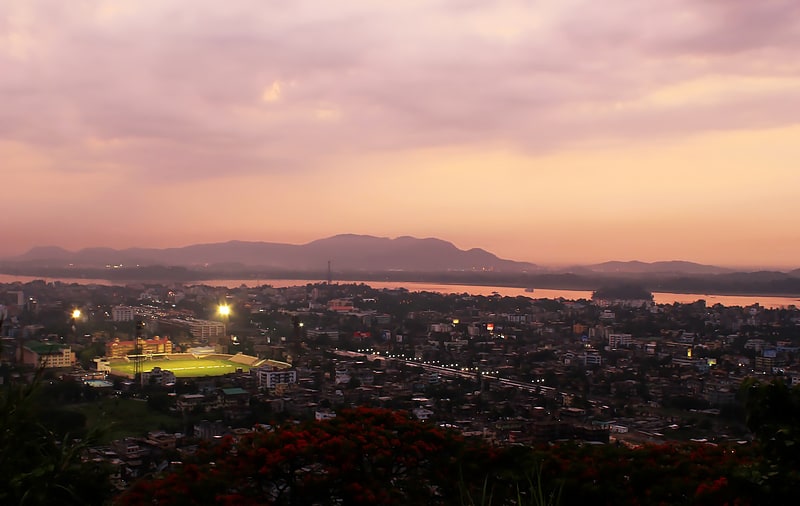
Also known as: दिसपुर
City in India. Dispur is the capital of the Indian state of Assam and is a sub-urban locality located at Guwahati.
It became the capital in 1973, when Shillong the erstwhile capital, became the capital of the state of Meghalaya that was carved out of Assam.
Dispur is the seat of power of Government of Assam. The Assam Secretariat (Janata Bhawan) building is located in Dispur along with the Assam Legislative Assembly House, MLA Hostels and the State Emergency Operations Centre. The Assam Trunk road and the G S road passes through Dispur. To the south of Dispur lies the theologically important site of Basistha Ashram and the Shankardev Kalakshetra, a cultural centre created in the 1990s. Next to Dispur is the township of Jatia.
Though it is well known as the capital of Assam, Dispur is also known for the Guwahati Tea Auction Centre.[10]
Assam State Zoo cum Botanical Garden
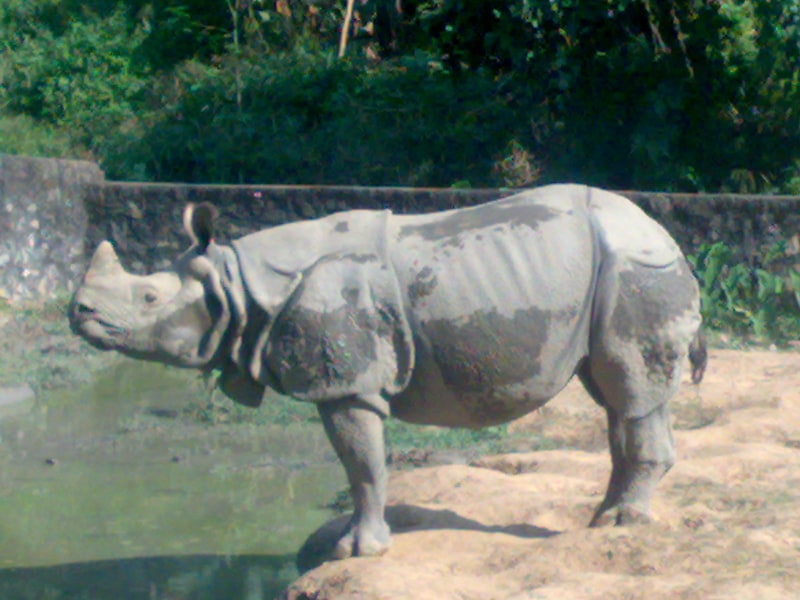
Expansive place with many exotic animals. The Assam State Zoo cum Botanical Garden is the largest of its kind in the North East region and it is spread across 432 acre. The zoo is located within the Hengrabari Reserved Forest at Guwahati, India. The zoo is home to about 895 animals, birds and reptiles representing almost 113 species of animals and birds from around the world.
The Divisional officer of Assam State Zoo is Mr Tejas Mariswamy from Mysore, Karnataka.[11]
Umananda Island
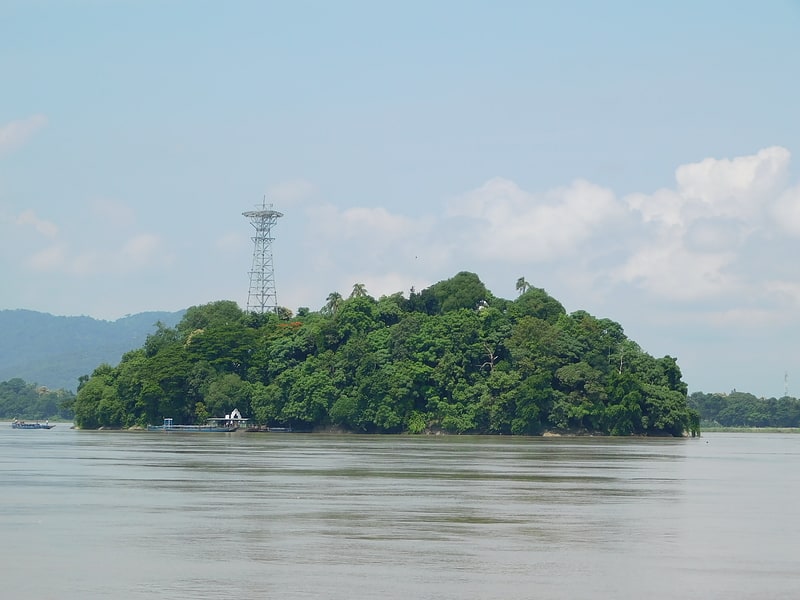
Umananda Island is the smallest inhabited river islet in the middle of river Brahmaputra, flowing through the city of Guwahati in Assam, a state in northeast India.
Its name derives from Assamese Uma, another name for the Hindu goddess Parvati, the wife of Shiva; and ananda, which translates to "joy". A British officer named the island Peacock Island for its structure, which he thought resembled the splayed feathers of a peacock. It is also known as Bhasmachal, from the words bhasma, meaning 'to destroy', and chal, meaning 'place'. The legend giving rise to this name is that Kamdev, the god of love in Hindu mythology, after interrupting Shiva in the middle of a deep meditation on the islet, was burnt to ashes.
It is mostly visited for its Shiva temple, the Umananda Temple, and was also home to a large population of golden langurs, an endangered species of primate.
The islet can be reached via a 10-minute ferry, available from Umananda Ghat, located near the Guwahati High Court.[12]
Ugratara Devalaya
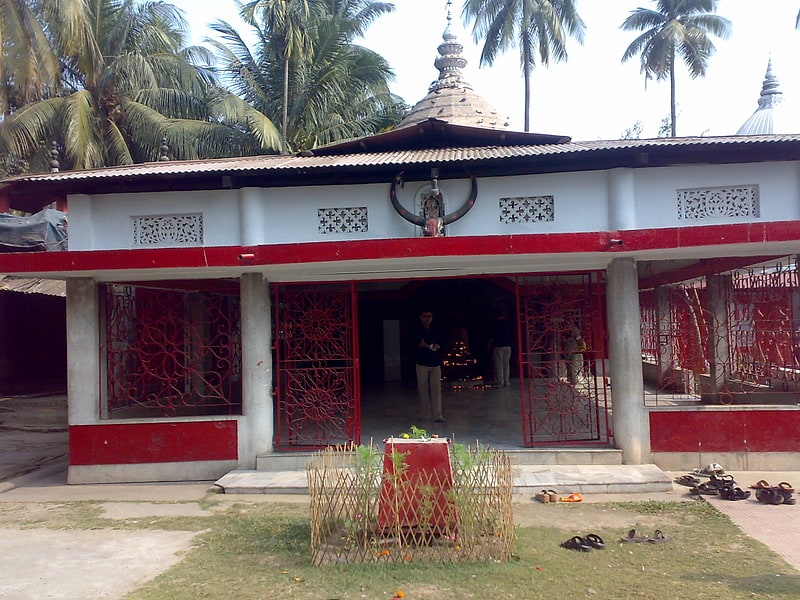
Ugratara Devalaya is a temple dedicated to Ugratara located in the western side of Jor Pukhury tanks in the heart of Guwahati city in the Lotaxil locality in Northeast India. The Ugratara Temple in Uzan Bazaar in the eastern part of Guwahati, Assam, is a Shakti shrine. Legend has said that the navel of Sati, first consort of Shiva, is related to this temple. Ugratara in Assam is generally identified with Tiksna-Kanta, Eka-Jata, etc. of the Buddhist pantheon.
The present temple of Ugra Tara was built by Ahom King Siva Singha in 1725 AD who had excavated a tank three years before. The tank, known as Jorepukhuri, is situated to the east of the temple. The tank still exists, though the upper section of the temple was destroyed by a devastating earthquake. This was however rebuilt by a local citizen.
Kalika purana describes a Shakti peetha called Dikkara vasini. Dikkara vasini has two forms, Tikshna kantha and Lalitha kantha. Tikshna kantha is black and pot bellied, also called as Ugra Tara or Eka jata. Lalitha kantha is gracefully attractive, also called as Tamreshwari.
In the garbhagriha of Ugra Tara there is no image or idol of her. A small pit filled with water is considered as the Goddess. There is a Shivalaya beside Ugra Tara temple and a pond behind both temples.[13]
Shradhanjali Kanan
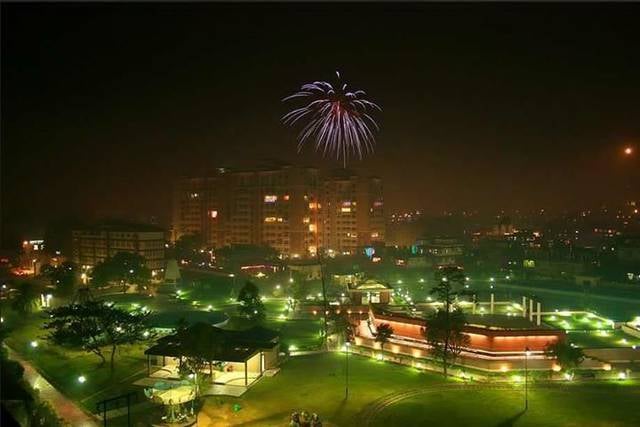
Relax in park, Park
Address: 42, RG Baruah Rd, 781003 Guwahati
Dirgheshwari temple
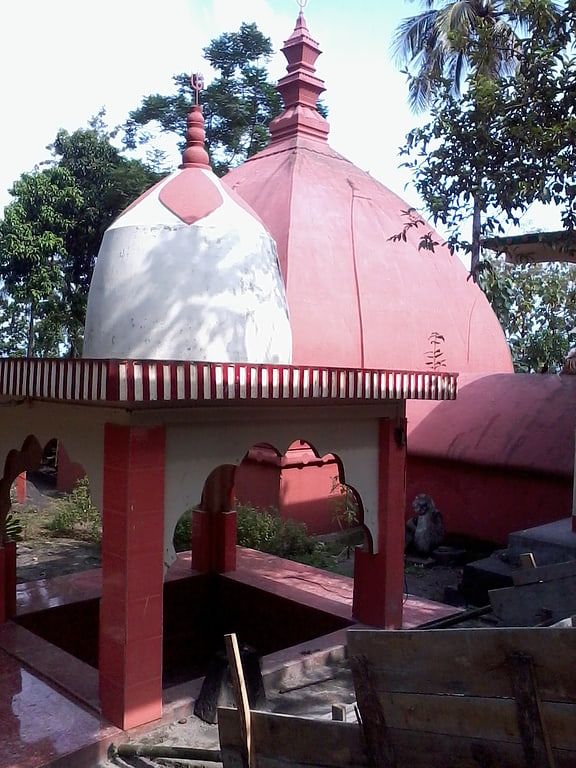
Dirgheswari Mandir is a temple situated in the northern banks of the river Brahmaputra in Guwahati, Assam,India. Many ancient images made on rocks existed along with the temple. Brick temple was Built by Ahom king Swargadeo Siva Singha, Dirgheswari temple is considered as a Shakti Peetha for Shakti Worship. The main attraction of Dirgheswari temple is the annual Durga Puja celebrations, in which devotees from far of places use to attend.[14]